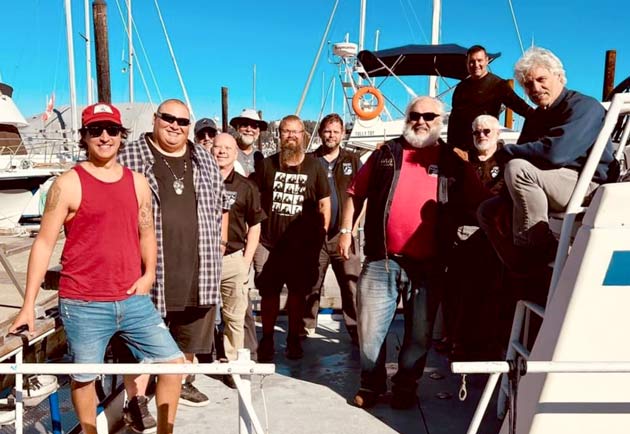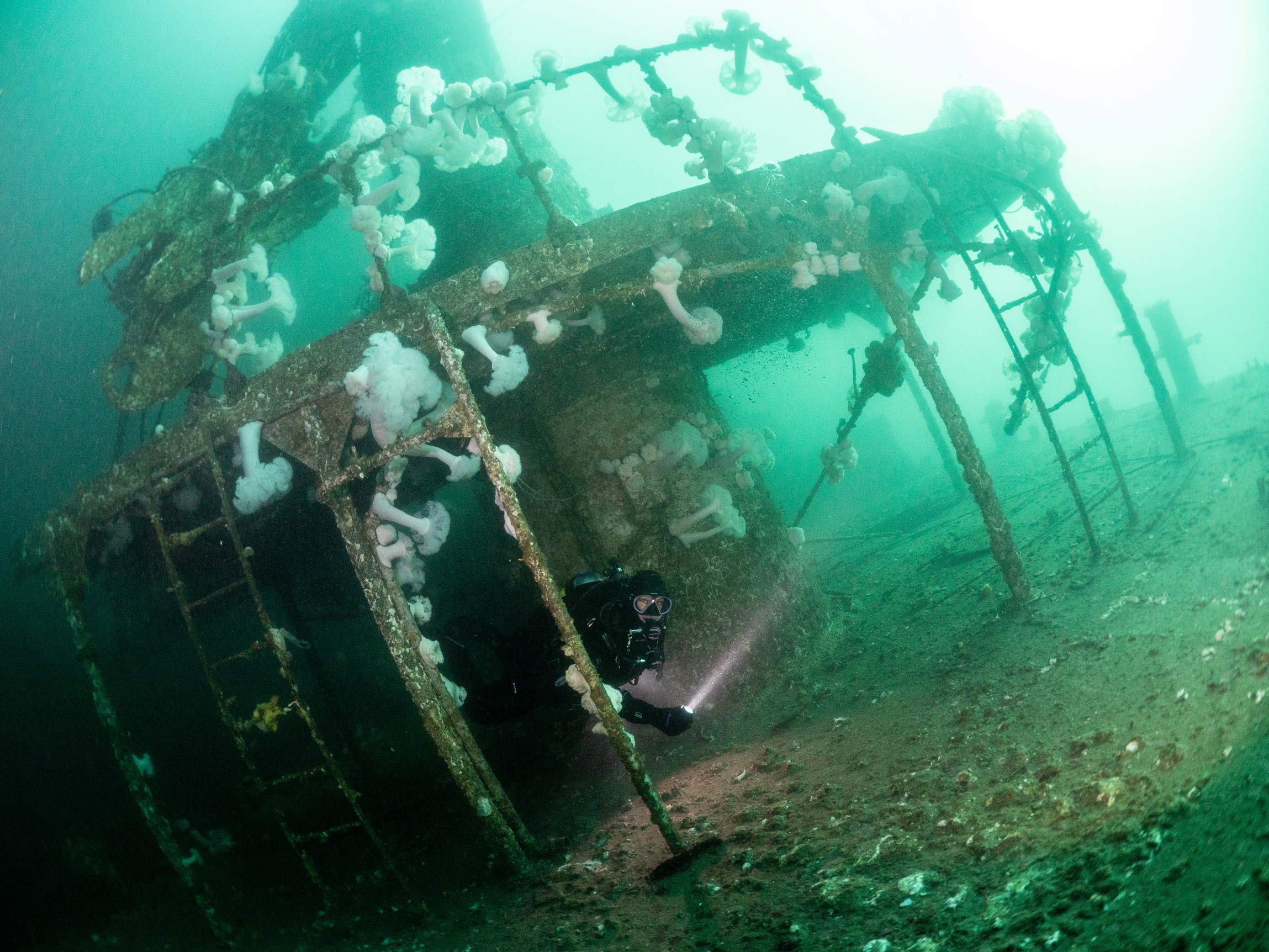The Magic of Artificial Reefs
By Howard Robins and Richard Wall

For end-of-life ships, a new life starts at the bottom of the ocean. Artificial reefs take marine vessels and convert them to living incubators for a plethora of marine life, from plants, to sponges to fish. For a group of marine environmentalists, underwater visits to two ships reminded the team of the magic of reef making.
A team from the Artificial Reef Society of British Columbia (ARSBC) and the producers of a new groundbreaking underwater TV documentary, Water Worlds, recently came together to explore two artificial reefs: The YOGN located near Powell River and the former HMCS Columbia near Campbell River. The purpose of the dive was to explore and film marine life for an upcoming Water Worlds episode featuring artificial reefs. Due to COVID restrictions, the ARSBC had not visited their latest reefing projects since 2018. Like magic, teams discovered over the last few years marine habitat has exploded. Like other artificial reefs managed by ARSBC, the YOGN and Columbia show how end of life vessels have a second life in expanding marine habitat.
Rockfish and Lingcod Call YOGN Home
The teams were amazed to see so many resident rockfish and lingcod on the YOGN after only a few years as a reef. The USS YOGN-82 was an unpropelled gasoline barge built in 1943 by Concrete Ship Constructors, National City, California and launched in 1944. Displacing 4860 tons, she is 375 ft long, 56 ft wide and 38 ft deep. Each vessel had a crew of twelve and carried ten million liters of gasoline in twenty-four cargo tanks. She was reefed in June 2018 off Willingdon Beach in Powell River, BC and now rests on her keel fully upright in one hundred feet of water.
As an artificial reef, the YOGN has been positioned where water currents deliver and deposit embryonic organisms onto its complex structure, continuously seeding all areas, especially the exterior. The ship now has a coating of algae that has formed a diatom matt holding numerous species of plants and filter feeder species. A diatom matt is essentially the basic building block of a new reef habitat and support system. Importantly, certain marine species that photosynthesize on artificial reefs also aid in carbon sequestration, the act of pulling in and
capturing CO2 emissions from the atmosphere. The YOGN demonstrates how artificial reefs not only expand marine habitat but also help reduce greenhouse gases.
COLUMBIA is an Incubator for Sponges and Fish
Teeming with life, the Columbia appears to be an incubator for juvenile marine life, from sponges to fish. The former HMCS Columbia was a Restigouche Class Destroyer Escort, built by the Burrard Drydock Company in North Vancouver. Commissioned on 7 November 1959, she served on Canada’s East Coast until 1967 when she returned to Esquimalt as a stationary training ship. She was decommissioned in 1974 and reefed in June 1996 off Maude Island, Campbell River, BC and rests on her keel in about 120 ft of water with a 36⁰ list to port.

Water Worlds Feature Artificial Reefs
Water Worlds Season 1 is the first all Aboriginal Canadian film production that focuses on the oceans and waterways around Canada through an Indigenous lens that highlights Indigenous and non-Indigenous peoples working together to save Mother Earth. Each episode in the series will highlight those who’s mandate is to help make a difference. The ARSBC was thrilled to learn one episode will feature artificial reefs and include ARSBC as the ships-to-reefs disposal experts. The show is scheduled to air in the fall of 2023 on the Aboriginal Peoples Television Network (APTN). Narration by Metis actress Tantoo Cardinal is being negotiated.
About the Authors:
Howard Robins, President and CEO
Howie has been involved with the ARSBC since its start in 1989 and assumed the role of President in 2006. He has been an active diver since 1973.
Richard Wall, Vice President and COO
Rick served 36 years in the Royal Canadian Navy as a Marine Systems Engineer, retiring in 2008 at the rank of Lieutenant Commander. Although not a diver, Rick did serve on three of the ships that are now artificial reefs. He assumed the role of Vice President in 2017
For more information about Water Worlds visit CIA Solutions.
The Artificial Reef Society of British Columbia’s (ARSBC) mission is to create environmentally and economically sustainable artificial reefs in British Columbia and around the world for the protection and enhancement of sensitive marine habitats. Since 1991, the ARSBC has sunk eight ships and one Boeing 737 in the waters off British Columbia. ARSBC’s sound ecological approach and consistent record of artificial reefing has increased biodiversity and biomass in waters around Vancouver and Vancouver Island. For more information on the ARSBC and its mission, visit www.artificialreefsocietybc.ca.
C.I.A. Solutions brings advanced technology and high-quality production to our advertising and video production clients. As a leading indoor digital advertising company for Alberta and BC, we offer video production, video streaming services, digital billboards, and instructional video production. The company is Indigenous owned and operated, located in Grande Prairie. Clients include the Government of Canada, Telus Story Hive, and many businesses across Western Canada.
Leave a Comment







